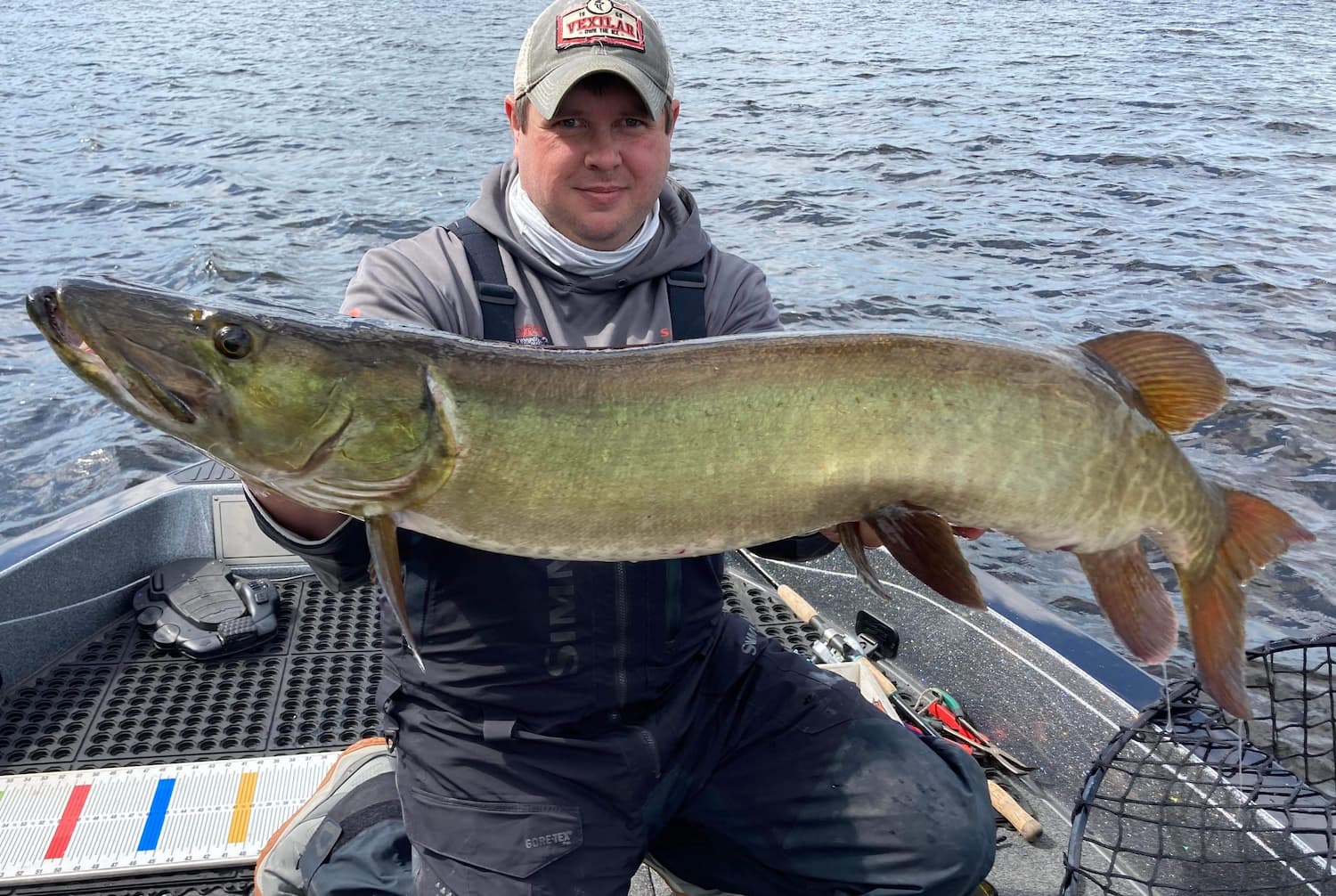
Musky Pro Tips
October 16, 2023
Go Big in the Fall: Fall is when muskies put on their feedbags in the Northwoods of Wisconsin. Use the biggest baits you have. A foot-long jerkbait or a 18-inch live sucker are not too big. Trophy-size muskies like to consume prey that are in the neighborhood of one third of that musky’s length. For a 50-inch fish, that’s a 16-inch bait.
Trust Your Experience: Musky angling is about learning. It takes a long time to learn what you’re doing. But the experience you gain as you fish is invaluable. Keep track of your progress—the number of follows by muskies, the number of hook-ups and the number of landed fish. If you’re paying attention to how you’re fishing in Boulder Junction, you’ll surely notice steady improvement. Remember, every hour you spend on the water in northern Wisconsin puts you one hour closer to catching that once-in-a-lifetime musky. The way to become a better musky angler is time spent on the water.
Don’t Slow Down When You Have A Follow: One of the biggest mistakes a musky angler can make is slowing down their retrieve when a fish is following the bait. Keep steady speed or even slightly speed up the bait to potentially entice a strike. If the bait is near the boat and the fish hasn’t yet hit the bait, be ready to do a figure-eight. Keep doing the figure eight until either the fish strikes or it swims away.
Know Your Water: Before you fish a particular body of water (Vilas County has a lot of lakes to choose from), find a lake map. By looking at depth indications and contour lines, you can find the best places to focus your musky fishing efforts. That’ll save you precious time for casting.
Consider Going Barbless: A number of musky anglers are going barbless. Replacing barbed hooks with barbless or pinching down barbs will not reduce hookups. It will also make unhooking and releasing muskies easier.
Stay Sharp: If you want to increase your hook-setting success on muskies, you need to keep your hooks sharp. Before you cast that musky lure, make sure the hooks are all razor sharp. Carry a file in your tackle box for on-the-water touch-ups.
When It Comes To Lure Color, Black Is Best: When you’re in doubt about what color bait to use, go for black. There are fans of all sorts of bait colors, but black has the biggest following. The dark silhouette of a black bait running through the water is easy for muskies to get a bead on. Black is also fairly easy for anglers to see.
Downsize In The Spring: In the first few weeks of the musky season—when water temperatures are still rather cool in northern Wisconsin—use smaller baits, such as crankbaits in the six- to eight-inch range and small bucktail spinners. As temperatures gradually warm up, slowly increase the size of the baits you’re fishing.
Spend More Time Casting: Musky fishing rewards persistence. Maximize your chances for success by making lots of casts. Cover all of the possible musky hiding spots before moving to the next location. Make multiple casts over really prime water. And don’t spend too much time switching lures. It’s more important to have confidence in what you’re fishing and keep on casting.
Featured Photograph: Josh Lenda, 2022 “Show us your Musky” 44.5in
